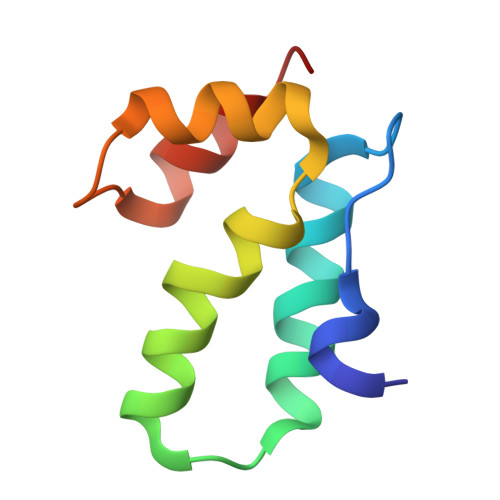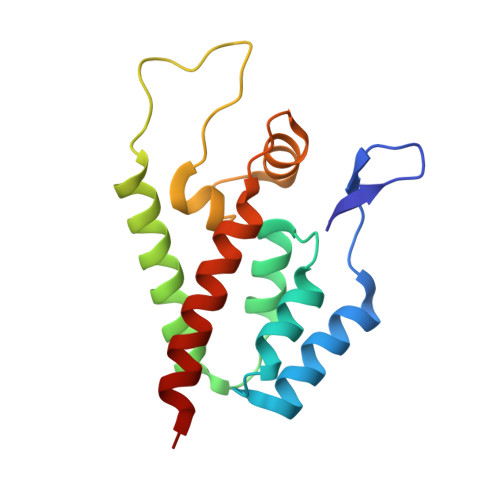The structure and flexibility of conical HIV-1 capsids determined within intact virions.
Mattei, S., Glass, B., Hagen, W.J., Krausslich, H.G., Briggs, J.A.(2016) Science 354: 1434-1437
- PubMed: 27980210
- DOI: https://doi.org/10.1126/science.aah4972
- Primary Citation of Related Structures:
5MCX, 5MCY, 5MCZ, 5MD0, 5MD1, 5MD2, 5MD3, 5MD4, 5MD5, 5MD6, 5MD7, 5MD8, 5MD9, 5MDA, 5MDB, 5MDC, 5MDD, 5MDE, 5MDF, 5MDG - PubMed Abstract:
HIV-1 contains a cone-shaped capsid encasing the viral genome. This capsid is thought to follow fullerene geometry-a curved hexameric lattice of the capsid protein, CA, closed by incorporating 12 CA pentamers. Current models for core structure are based on crystallography of hexameric and cross-linked pentameric CA, electron microscopy of tubular CA arrays, and simulations. Here, we report subnanometer-resolution cryo-electron tomography structures of hexameric and pentameric CA within intact HIV-1 particles. Whereas the hexamer structure is compatible with crystallography studies, the pentamer forms using different interfaces. Determining multiple structures revealed how CA flexes to form the variably curved core shell. We show that HIV-1 CA assembles both aberrant and perfect fullerene cones, supporting models in which conical cores assemble de novo after maturation.
Organizational Affiliation:
Structural and Computational Biology Unit, European Molecular Biology Laboratory, Meyerhofstrasse 1, 69117 Heidelberg, Germany.















